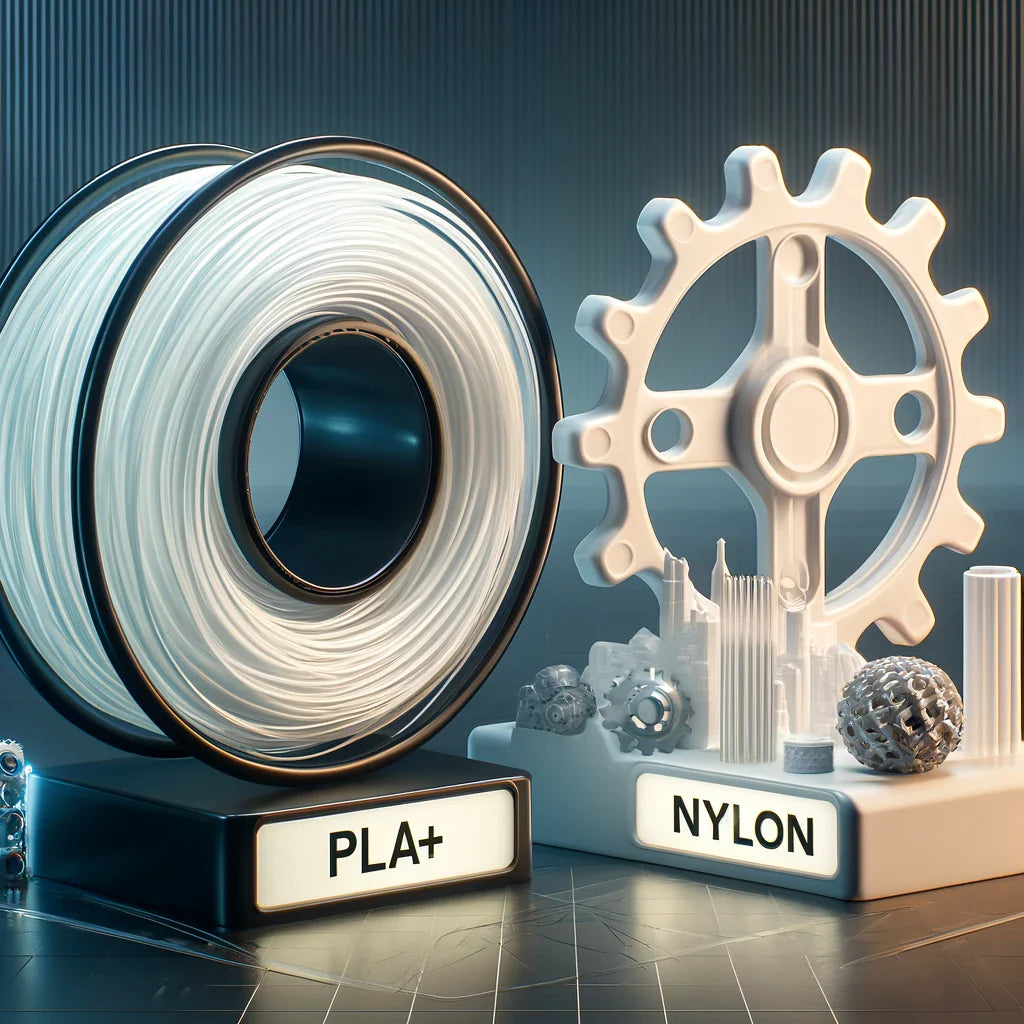When it comes to choosing the right filament for creating durable 3D prints, two popular options that often come up are PLA+ (Polylactic Acid Plus) and Nylon. Both of these filaments have their strengths, but they offer different levels of durability, flexibility, and strength. Understanding their key differences will help you make an informed decision for your next project. At 3D META, we offer both PLA+ and Nylon filaments, and we are here to guide you through their characteristics to ensure you select the right material for your 3D printing needs.
What Is PLA+?
PLA+ is an enhanced version of the traditional pla+ filament, designed to provide better mechanical properties, increased strength, and improved durability. It’s still made from renewable resources, such as cornstarch, but its formulation has been optimized for higher performance. PLA+ combines the easy-to-print nature of PLA with enhanced toughness and durability, making it a great option for projects that require better strength than standard PLA.
Key Features of PLA+:
-
Improved Strength: PLA+ is tougher and more durable than regular PLA, making it less likely to crack or break under stress.
-
Easy to Print: Like PLA, PLA+ is easy to print with, requiring lower extrusion temperatures (around 200°C to 220°C) and minimal warping, making it ideal for beginners.
-
Smooth Finish: PLA+ offers a smooth, glossy finish, making it an excellent choice for aesthetic prints or prototypes.
-
Applications: PLA+ is great for visual models, prototypes, and parts that need moderate durability and strength but don’t face extreme stress.
What Is Nylon?
Nylon, also known as Polyamide, is a strong, flexible, and highly durable filament used for parts that require significant mechanical strength and wear resistance. Nylon is often used in industrial applications due to its toughness, flexibility, and resistance to abrasion and impact. Unlike PLA+, Nylon is more challenging to print, requiring higher extrusion temperatures and a heated bed, but it offers superior durability and flexibility for parts that need to withstand physical stress over time.
Key Features of Nylon:
-
Superior Durability: Nylon is incredibly strong, tough, and resistant to wear, which makes it ideal for parts that will experience high friction or heavy usage, such as gears, mechanical components, and functional parts.
-
Flexibility: Nylon has great flexibility and can absorb impact without cracking or breaking, making it suitable for parts that need to bend or flex under pressure.
-
Chemical and Abrasion Resistance: Nylon is resistant to many chemicals and is less likely to degrade over time compared to PLA+, making it an excellent choice for parts exposed to harsh environments.
-
Applications: Nylon is perfect for creating mechanical parts, gears, tools, automotive components, and any application that requires long-lasting, impact-resistant parts.
Key Differences Between PLA+ and Nylon
1. Durability
-
PLA+ is more durable than standard PLA, but it doesn’t match the level of toughness and impact resistance that Nylon offers.
-
Nylon is known for its superior durability and wear resistance, making it ideal for parts that will undergo significant mechanical stress or exposure to chemicals.
2. Flexibility
-
PLA+ is more rigid and can crack under high stress, although it is more flexible than regular PLA.
-
Nylon is highly flexible and resilient, meaning it can bend, flex, and absorb shock without breaking, making it suitable for parts that require flexibility.
3. Ease of Printing
-
PLA+ is easy to print with and doesn’t require a heated bed or special printing conditions, making it ideal for beginners.
-
Nylon, while offering superior durability, can be more difficult to print with. It requires higher extrusion temperatures (typically 240°C to 270°C), a heated bed, and sometimes an enclosed print chamber to prevent warping.
4. Applications
-
PLA+ is great for aesthetic models, prototypes, and parts that need moderate durability but are not subjected to extreme stress.
-
Nylon is best suited for functional parts, mechanical components, and products that need to endure high wear, impact, or exposure to harsh environments.
Which One Should You Choose?
If you’re looking for a filament that offers durability with ease of printing and is suitable for a variety of non-functional parts, PLA+ is a fantastic option. It’s easy to use, cost-effective, and produces visually appealing prints that still have good strength for everyday applications.
On the other hand, if you need a filament that offers extreme durability, flexibility, and resistance to wear and chemicals, Nylon is the better choice. It’s ideal for functional parts that require long-term performance, especially in mechanical, automotive, or industrial applications.
Shop Now at 3D META
At 3D META, we offer a wide range of PLA+ and nylon 3d printing filament to cater to your 3D printing needs. Whether you’re working on a project that requires moderate durability or one that demands maximum strength and flexibility, we have the perfect filament for you. Shop Now to explore our high-quality filaments and find the right material for your next 3d printing solutions australia. Let 3D META help you bring your ideas to life with precision and durability!

